Top 7 Deep Learning Models for Crop Yield Estimation
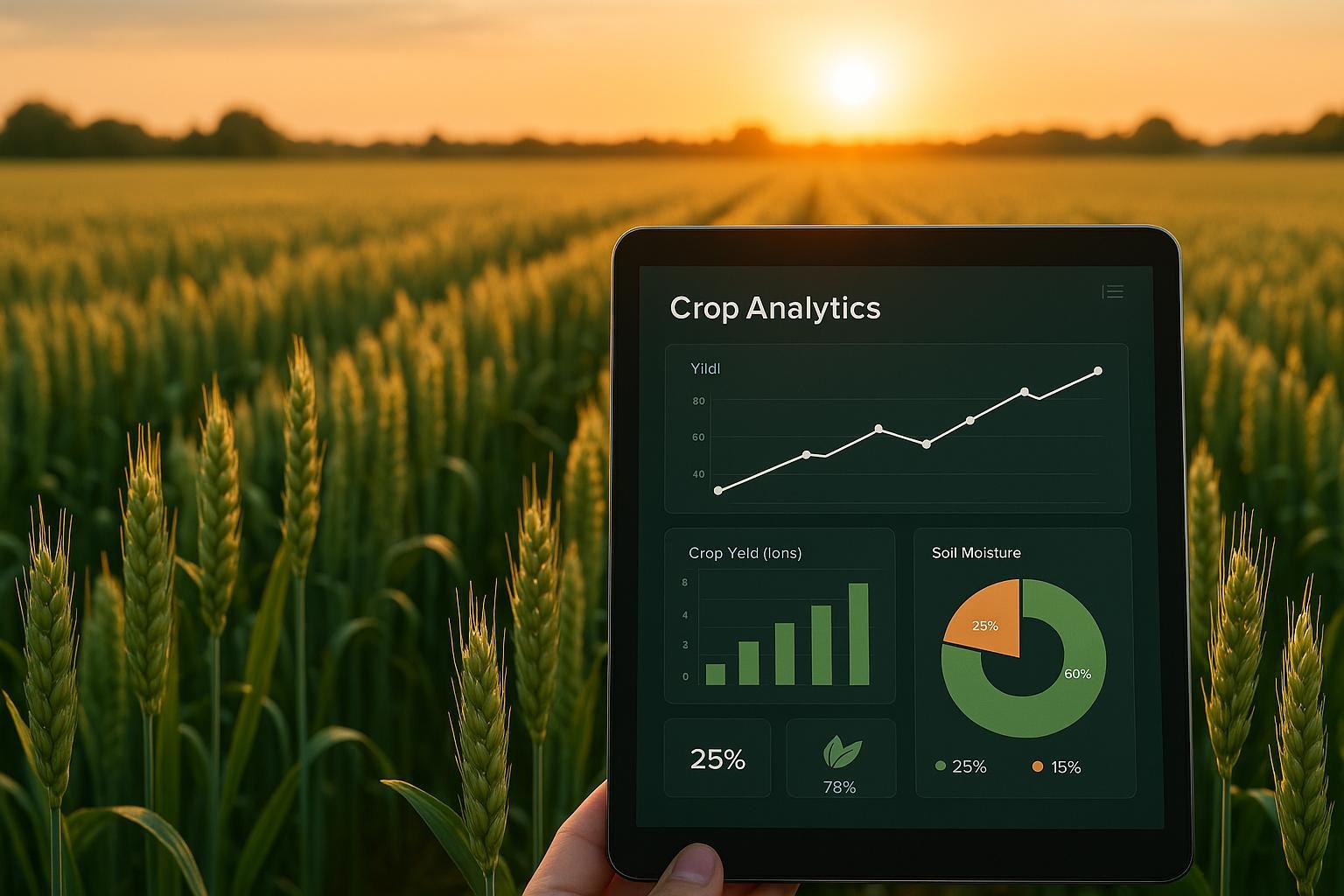
Deep learning models are transforming how we predict crop yields by analyzing complex agricultural data. From satellite imagery to weather patterns, these models identify patterns that traditional methods miss. Here’s a quick summary of the top 7 models:
- Deep Neural Networks (DNNs): Analyze structured data like soil and weather to find hidden relationships.
- Convolutional Neural Networks (CNNs): Process visual data (e.g., satellite images) to assess crop health and yield.
- Recurrent Neural Networks (RNNs) & LSTMs: Handle time-series data to analyze weather and seasonal trends.
- Deep Gaussian Processes (DGPs): Add uncertainty analysis to predictions, useful for risk management.
- Autoencoders: Compress and filter data, making it easier for other models to focus on key features.
- Attention-Based Models: Focus on the most relevant data for precise predictions and uncertainty estimates.
- Hybrid Architectures: Combine multiple models (e.g., CNNs and RNNs) for detailed insights across diverse data.
Each model has strengths tailored to specific agricultural needs, from small farms to large-scale operations. The choice depends on data type, scale, and resources.
Revolutionize Farming with AI: Crop Yield Predictions Using LSTM & ChatGPT!

1. Deep Neural Networks (DNNs)
Deep learning is reshaping how we predict crop yields, and Deep Neural Networks (DNNs) are at the forefront of this transformation. These networks excel at analyzing massive agricultural datasets, pulling in variables like temperature, rainfall, soil pH levels, nitrogen content, and planting dates. By doing so, DNNs uncover the intricate relationships within agricultural systems that traditional models often miss.
What makes DNNs stand out is their ability to detect complex patterns in historical yield data. This means they can account for seasonal variations, potentially offering more reliable predictions compared to conventional statistical methods.
Another key strength of DNNs is their flexibility. They can scale seamlessly - from analyzing data for a single field to handling regional-level insights using the same architecture. This adaptability makes them a powerful tool for agriculture at any scale.
Once trained, DNNs also shine in terms of speed. They can generate yield predictions quickly, enabling farmers and agricultural planners to make timely adjustments to their planting strategies. This efficiency is a game-changer for decision-making in modern farming.
2. Convolutional Neural Networks (CNNs)
When it comes to visual data, Convolutional Neural Networks (CNNs) shine. These deep learning models are particularly useful in agriculture for processing visual inputs like satellite images, drone footage, and field photos - making them invaluable for tasks like yield prediction.
CNNs work by breaking down images into smaller sections, identifying patterns such as vegetation color, leaf density, and unusual growth patterns. This allows them to uncover details about crop health that might not be obvious to the human eye. For large-scale farms, where inspecting every field manually isn’t realistic, this kind of analysis is a game-changer. It also serves as the foundation for more advanced techniques like spectral analysis.
By analyzing multispectral and hyperspectral imagery alongside standard RGB data, CNNs provide insights into plant health metrics, including chlorophyll content, water stress, and nutrient deficiencies. This comprehensive view helps farmers monitor and manage crops more effectively.
Another advantage of CNNs is their ability to scale. Whether you’re analyzing a single field or an entire region, these models adapt seamlessly. Their speed and efficiency also make real-time decision-making easier, enabling quick adjustments to irrigation or fertilization during critical growth periods.
🚀 Ready to Reinvent Your Garden?
Join thousands of homeowners who have transformed their gardens using our AI design tool. Upload one photo to explore endless possibilities.
Get your AI garden designs →3. Recurrent Neural Networks (RNNs) and Long Short-Term Memory (LSTM) Networks
When it comes to processing sequential agricultural data, Recurrent Neural Networks (RNNs) and Long Short-Term Memory (LSTM) networks shine. Unlike Convolutional Neural Networks (CNNs), which are great for visual data, RNNs and LSTMs are specifically designed to handle time-dependent information. This makes them perfect for tasks like analyzing weather patterns, tracking soil conditions, or monitoring crop growth over time.
These models have a unique ability to "remember" past data, using it to refine predictions and identify how earlier conditions impact crop performance. LSTM networks take this a step further by addressing the vanishing gradient problem, which allows them to manage long sequences of data effectively - essential for analyzing information that spans an entire growing season.
In real-world applications, these models can combine multiple time-series inputs, such as temperature, precipitation, and soil moisture levels, to deliver more accurate yield predictions. They also excel at spotting seasonal trends, helping farmers make better decisions about planning and managing risks. By integrating this dynamic, season-long data, RNNs and LSTMs provide a deeper understanding that complements visual assessments, offering a more comprehensive view of agricultural processes.
4. Deep Gaussian Processes (DGPs)
Deep Gaussian Processes (DGPs) add a probabilistic layer to crop yield estimation that goes beyond the capabilities of traditional neural networks. Unlike models that provide single-point predictions, DGPs deliver a detailed view of uncertainty, which is crucial in agriculture where understanding potential risks can be just as important as forecasting outcomes. By building on earlier deep learning methods, DGPs introduce a framework that not only predicts outcomes but also helps manage agricultural risks.
This method stands out by explicitly accounting for prediction uncertainty, complementing the deterministic models commonly used. DGPs stack multiple Gaussian processes, allowing them to capture complex, non-linear relationships in agricultural data. Unlike sequential models, DGPs excel at carrying uncertainty through each layer of the model, offering a more dynamic and realistic picture. As new data - whether from drones, satellites, or weather stations - becomes available, DGPs adjust their predictions while consistently quantifying the associated uncertainty.
One of the key strengths of DGPs lies in their ability to handle sparse or incomplete data, a common challenge in agriculture. Many farming regions lack extensive historical records or have gaps in sensor coverage, which can lead traditional models to make overly confident predictions. DGPs, however, explicitly model these uncertainties, providing more reliable insights even when data is limited.
The uncertainty bounds generated by DGPs are incredibly useful for decision-making. For instance, when predictions show high uncertainty, farmers might consider measures like crop insurance or diversifying crops to reduce risk. On the other hand, predictions with low uncertainty can give farmers the confidence to make targeted investments.
Additionally, the probabilistic nature of DGPs makes them ideal for balancing multiple goals in agricultural planning. Instead of focusing solely on maximizing yields, DGPs can help weigh competing priorities like resource efficiency and environmental considerations. By providing clear uncertainty estimates, they allow farmers to better understand the trade-offs involved in their decisions.
sbb-itb-4d6a8dd
5. Autoencoders
Autoencoders play an intriguing role in estimating crop yields by acting as powerful tools for data compression and feature extraction. Unlike Deep Gaussian Processes, which focus on modeling uncertainty, autoencoders excel at uncovering hidden patterns in agricultural data. They achieve this by compressing data into essential features and then reconstructing it, effectively filtering out noise while keeping the critical information needed for accurate predictions.
The structure of an autoencoder includes two core components: an encoder and a decoder. The encoder compresses complex, multi-dimensional data into a simplified, lower-dimensional format, while the decoder reconstructs the original data from this compressed version. In agriculture, this means distilling large and complex datasets into the most predictive features, making them easier to analyze.
One standout feature of autoencoders is their ability to work with varied data types. They can merge diverse agricultural datasets into unified representations, capturing relationships between different kinds of data, such as weather patterns, soil conditions, and satellite imagery.
Their feature extraction capabilities are especially impactful when dealing with high-resolution satellite images. Autoencoders can automatically pinpoint which combinations of spectral signatures, vegetation indices, and spatial patterns are most relevant for predicting crop performance. This not only reduces the computational load but also enhances the accuracy of predictions.
When it comes to accuracy, autoencoders are often used as a preprocessing step rather than standalone prediction models. By cleaning and compressing raw input data, they prepare it for other deep learning models, such as CNNs or RNNs, allowing these models to focus on the most relevant features. This preprocessing step often leads to better predictions compared to using unprocessed data, making autoencoders particularly useful for large-scale agricultural setups.
Their scalability is another key advantage. Autoencoders rely on unsupervised learning, which means they don’t need labeled yield data to function. This makes them especially valuable in areas with limited historical records, as they can learn from readily available data like satellite images and weather information. Once trained, autoencoders can quickly process new data, making them ideal for real-time applications across large agricultural regions.
However, a limitation of traditional autoencoders is their lack of uncertainty assessment. Unlike Deep Gaussian Processes, which provide probabilistic outputs, autoencoders produce deterministic results. While reconstruction error can act as a rough proxy for uncertainty - higher errors might indicate that the input data is unlike what the model was trained on - it doesn’t offer the rigorous probabilistic framework needed for some decision-making scenarios.
Beyond yield predictions, autoencoders are also excellent at anomaly detection. When trained on typical growing conditions, they can spot unusual patterns, such as those caused by pest infestations, diseases, or extreme weather events. These anomalies often signal potential yield losses, offering early warnings that complement traditional prediction methods.
Finally, the efficiency of autoencoders makes them a practical choice for large-scale agricultural monitoring. Once trained, they can compress and process massive amounts of satellite imagery quickly, enabling near real-time analysis across multiple fields. This speed and efficiency are critical for monitoring vast agricultural areas and integrating data from multiple sources.
6. Attention-Based Models
Attention-based models bring a focused approach to analyzing essential agricultural data. These models can prioritize critical details from sources like satellite imagery, weather conditions, and soil characteristics, making them particularly effective in crop yield estimation. A compelling example of this is highlighted in recent research.
In September 2024, Huiren Tian and his team introduced the Attention Mechanism-based Multi-level Crop Network (AMCN), designed for county-level wheat yield prediction in the Guanzhong Plain, PR China. By processing satellite imagery and weather data, the AMCN model demonstrated a high level of precision in estimating crop yields.
One standout feature of the AMCN model is its ability to measure uncertainty in its predictions. Through the use of Monte Carlo dropout during inference, the model not only provides point estimates but also calculates confidence intervals. The research revealed that uncertainty tends to decrease as crops progress through their growth stages. However, challenges such as drought or unevenly distributed training data can lead to higher levels of uncertainty in predictions.
Huiren Tian and his colleagues emphasized the importance of this approach, stating:
"Moreover, most DL models mainly focus on providing more accurate estimation yield results without providing any information about uncertainty, which is essential for calculating confidence intervals in the estimation and helping farmers to make corresponding measures. Therefore, we aim to quantitatively evaluate the uncertainty of the yield estimation model through Monte Carlo dropout." [1]
This added layer of uncertainty analysis not only improves the reliability of predictions but also equips farmers with the information they need to make better-informed decisions.
🎨 Visualize Your Dream Garden Today!
Transform any outdoor space into a professional landscape design in minutes. Just upload a photo, choose your style, and let our AI do the rest.
Start your garden transformation now →7. Hybrid Deep Learning Architectures
Hybrid deep learning architectures bring together methods like CNNs (Convolutional Neural Networks) for analyzing spatial data and RNNs (Recurrent Neural Networks) for capturing temporal patterns, creating powerful tools for predicting crop yields. Instead of relying on a single type of model, these hybrids combine multiple data perspectives to provide a more nuanced understanding of agricultural productivity.
These models integrate various data sources - satellite imagery, weather reports, soil sensor data, and historical yield records - into one cohesive system. This combination offers a broader and more detailed view of the complex factors that impact crop growth and productivity.
By leveraging the strengths of different neural networks, hybrid models excel at reducing prediction errors. For instance, they can pinpoint stressed crop areas while simultaneously identifying weather trends that may be influencing those conditions. These systems are flexible enough to adapt to farms of all sizes and geographic locations - whether it’s focusing on in-depth soil analysis for small vegetable farms or relying on satellite data to monitor vast grain fields.
Another advantage of hybrid models is their ability to handle uncertainty more effectively. By merging predictions from different types of networks, these models can provide confidence measures, helping to identify anomalies or inconsistencies that may need further investigation. They also address data gaps by compensating with alternative inputs, ensuring robust performance even when some data sources are incomplete.
Additionally, sharing processing layers between networks improves efficiency, making these systems more practical for real-world use. This streamlined approach not only saves computational resources but also enhances their applicability in agricultural settings. The following table will offer a clearer comparison of these models.
Model Comparison Table
The table below provides a side-by-side look at the key features of each model, helping you decide which one fits your specific agricultural needs. Factors like data type, prediction accuracy, scalability, and uncertainty analysis play a significant role in determining the right choice.
| Model Type | Data Requirements | Prediction Accuracy | Scalability | Uncertainty Quantification | Ideal Applications | Main Limitations |
|---|---|---|---|---|---|---|
| Deep Neural Networks (DNNs) | Structured data such as weather, soil, and historical yields | High when data is well-organized | Efficient for large datasets | Limited uncertainty analysis | Best for operations with detailed sensor data | Struggles with complex spatial and temporal patterns |
| Convolutional Neural Networks (CNNs) | High-resolution imagery (e.g., satellite or drone images) | Very high for image-based analysis | Benefits from parallel processing | Moderate spatial uncertainty analysis | Ideal for large-scale monitoring and precision agriculture | Sensitive to image quality and consistency |
| RNNs/LSTM Networks | Time-series data like weather patterns and growth stages | High for modeling temporal relationships | Sequential processing can limit scalability | Supports temporal uncertainty | Great for seasonal forecasting and climate-dependent crops | Computationally intensive for long sequences |
| Deep Gaussian Processes (DGPs) | Mixed data types, including sparse coverage | Moderate to high | Less scalable due to computational demands | Strong uncertainty quantification | Suitable for research and risk assessments | Complex to implement with high computational costs |
| Autoencoders | Large, diverse datasets, even with missing values | Moderate, depending on reconstruction | Efficient through feature compression | Limited uncertainty insights via indirect methods | Useful for data preprocessing and anomaly detection | Requires extensive training data for accuracy |
| Attention-Based Models | Multi-modal data combining imagery, weather, and soil | Very high by focusing on key features | Well-suited for parallel processing | Attention weights offer some uncertainty insights | Best for complex, multi-factor analyses and advanced research | High memory requirements and interpretability challenges |
| Hybrid Architectures | Integrated datasets (imagery, time-series, structured data) | Among the highest by leveraging multiple perspectives | Highly scalable with combined techniques | Strong uncertainty quantification from diverse sources | Ideal for comprehensive monitoring in commercial settings | Complex to implement and maintain |
This breakdown emphasizes the strengths and weaknesses of each model. For instance, DNNs and CNNs are efficient with moderate resources, making them practical for many operations. On the other hand, Hybrid Architectures shine in their ability to process diverse data but demand advanced hardware and expertise.
The choice of model depends on your goals and resources. Some models are better for short-term, in-season predictions, while others excel in long-term, seasonal insights. Understanding these trade-offs ensures you can align the model with your operational scale and data availability.
Conclusion
Selecting the right deep learning model depends on your data type, the scale of your operation, and the resources at your disposal. DNNs are ideal for processing sensor data, CNNs shine when working with images, and RNNs are suited for time-series data. If you have the resources, hybrid models can deliver even greater accuracy by combining the strengths of multiple architectures.
It's crucial to balance your data availability with the model's computational requirements. For smaller-scale operations, simpler models can efficiently meet your needs. On the other hand, larger farms with access to more advanced resources may find hybrid systems and attention-based models worth the investment, despite their higher memory demands.
AI in agriculture is no longer limited to yield predictions. Tools like AIGardenPlanner demonstrate how AI can revolutionize both large-scale farming and backyard gardening. These platforms provide tailored recommendations, showcasing AI's ability to address diverse agricultural challenges, from optimizing crop yields to designing personalized garden layouts.
This shift toward AI-driven agriculture is transforming how we grow plants. Whether you're managing thousands of acres or tending to a small garden, the goal remains the same: using data-driven insights to make smarter, more efficient decisions. Deep learning models are at the heart of this transformation, enabling precise and effective solutions that support sustainable farming and gardening practices across the country.
FAQs
How do deep learning models enhance crop yield predictions compared to traditional methods?
Deep learning models have transformed the way we predict crop yields by analyzing the intricate connections between factors like weather, soil conditions, and crop data. Unlike older statistical methods that often oversimplify these relationships, deep learning digs deeper to uncover patterns that might otherwise go unnoticed, resulting in forecasts that are both more accurate and dependable.
What’s particularly exciting is that these models evolve over time. As they process more data, they continuously refine their predictions, staying relevant even as environmental factors shift. This ability to adapt ensures that farmers and agricultural planners receive precise, timely insights, helping them make smarter decisions that boost productivity and support long-term farming success.
What should you consider when selecting a deep learning model for predicting crop yields?
When selecting a deep learning model for predicting crop yields, there are a few critical aspects to keep in mind:
- Data availability and type: The model should effectively utilize the data you have, whether it includes factors like temperature, rainfall, soil characteristics, or vegetation indices.
- Flexibility: Look for a model that can manage a variety of regions and crop types, especially if you're dealing with large or diverse areas.
- Accuracy vs. interpretability: It's essential to find a balance between how precise the predictions are and how easily the results can be understood and applied.
- Computational efficiency: Make sure the model fits within the limits of your resources and processing power.
In areas where data is scarce, methods like transfer learning or fine-tuning hyperparameters can help boost the model's performance. Ultimately, the best choice will depend on your specific objectives, the type of crops you're working with, and the conditions of the region you're focusing on.
How do hybrid deep learning models use different types of data to improve crop yield predictions?
Hybrid deep learning models enhance crop yield predictions by merging different types of data, including environmental conditions, genetic traits, and farming practices. These models often combine tools like convolutional neural networks (CNNs) for analyzing spatial data and recurrent neural networks (RNNs) for handling temporal patterns, allowing them to process multiple data types at once.
This multi-faceted approach helps uncover complex relationships between various data sources, resulting in more precise and dependable yield predictions. Such advancements are particularly valuable for tackling the challenges of modern agriculture and improving crop productivity.
🌺 Professional Garden Design in Minutes!
Stop wondering what your garden could look like. Upload a photo and let our AI show you 50+ professional design possibilities instantly.
Transform your garden now →Related posts
Related Articles
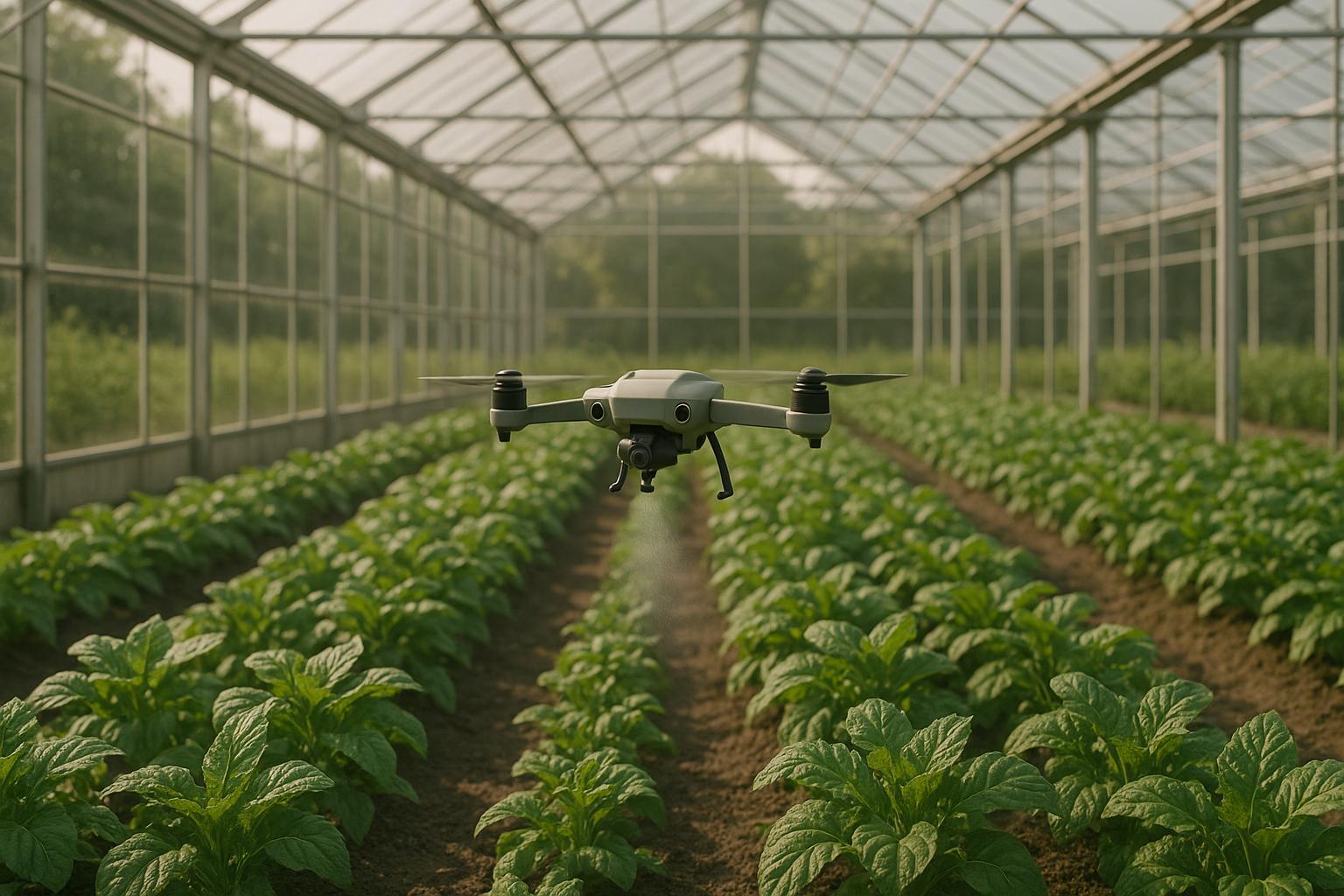
AI Pest Control: Benefits vs. Costs
Explore how AI pest control systems enhance pest management with precision, reduce costs, and minimize environmental impact.

How AI Tracks Biological Control Agents in Real Time
Explore how AI enhances pest management by tracking natural predators in real time, reducing pesticide use, and fostering healthier ecosystems.
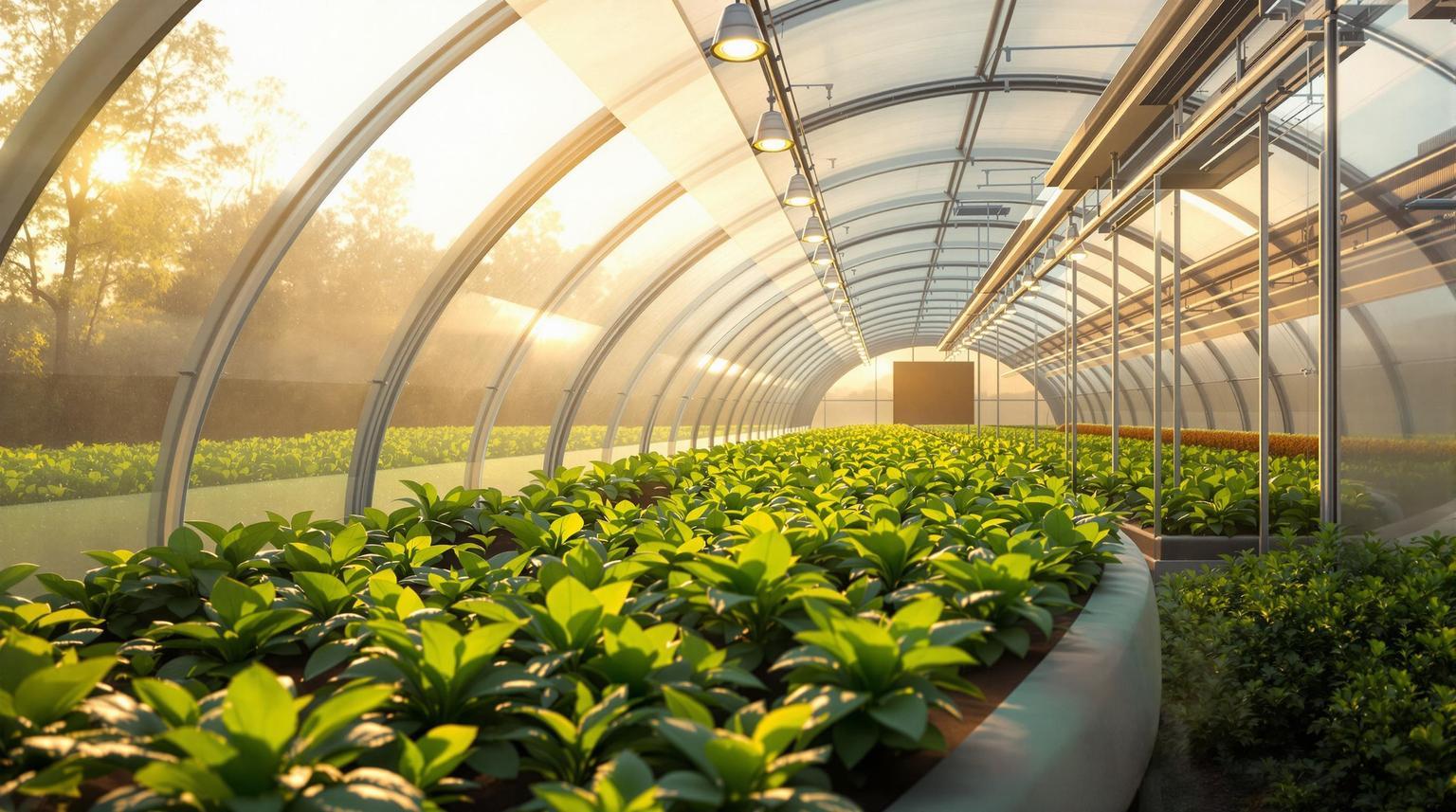
AI-Powered Heating For Microclimate Control
Unlock the potential of AI-powered heating systems to optimize plant health and reduce energy costs in gardening and agriculture.
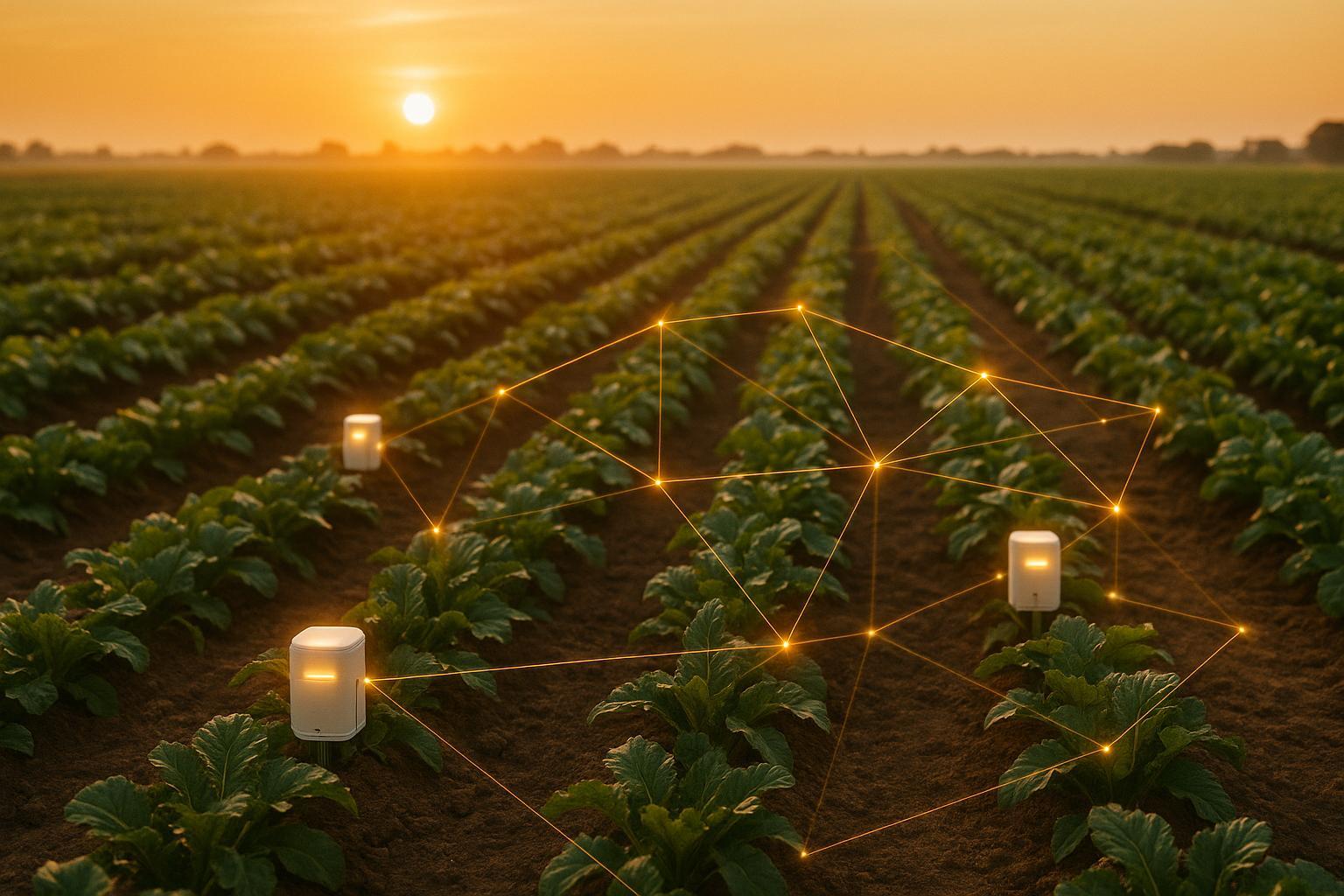
IoT Pesticide Networks: Data Security Risks
Explore the cybersecurity risks facing IoT pesticide networks in agriculture and discover effective strategies to enhance data security.
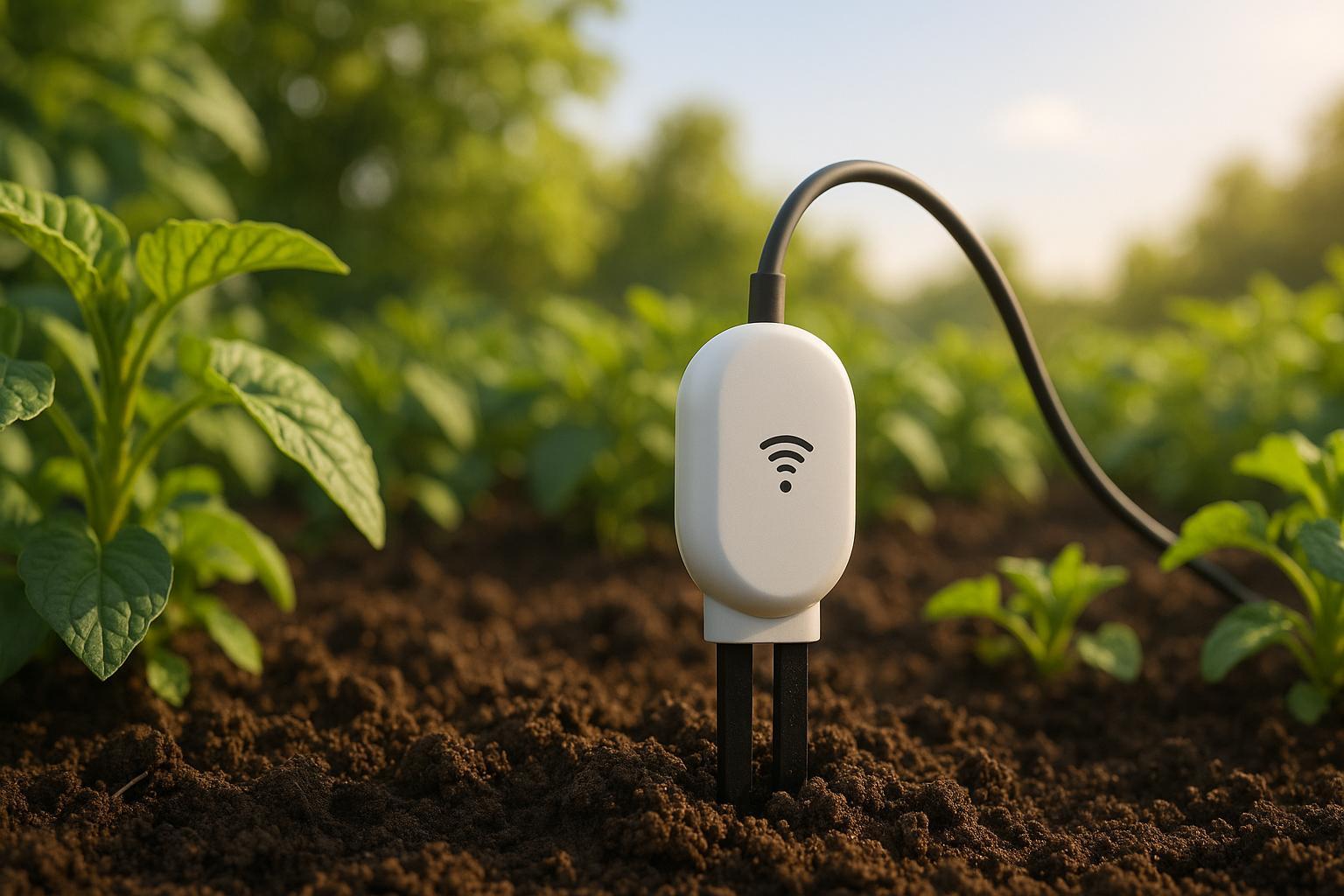
How Soil Sensors Work with Cloud Irrigation
Explore how soil sensors and cloud irrigation systems optimize water usage, enhance plant health, and simplify garden management.
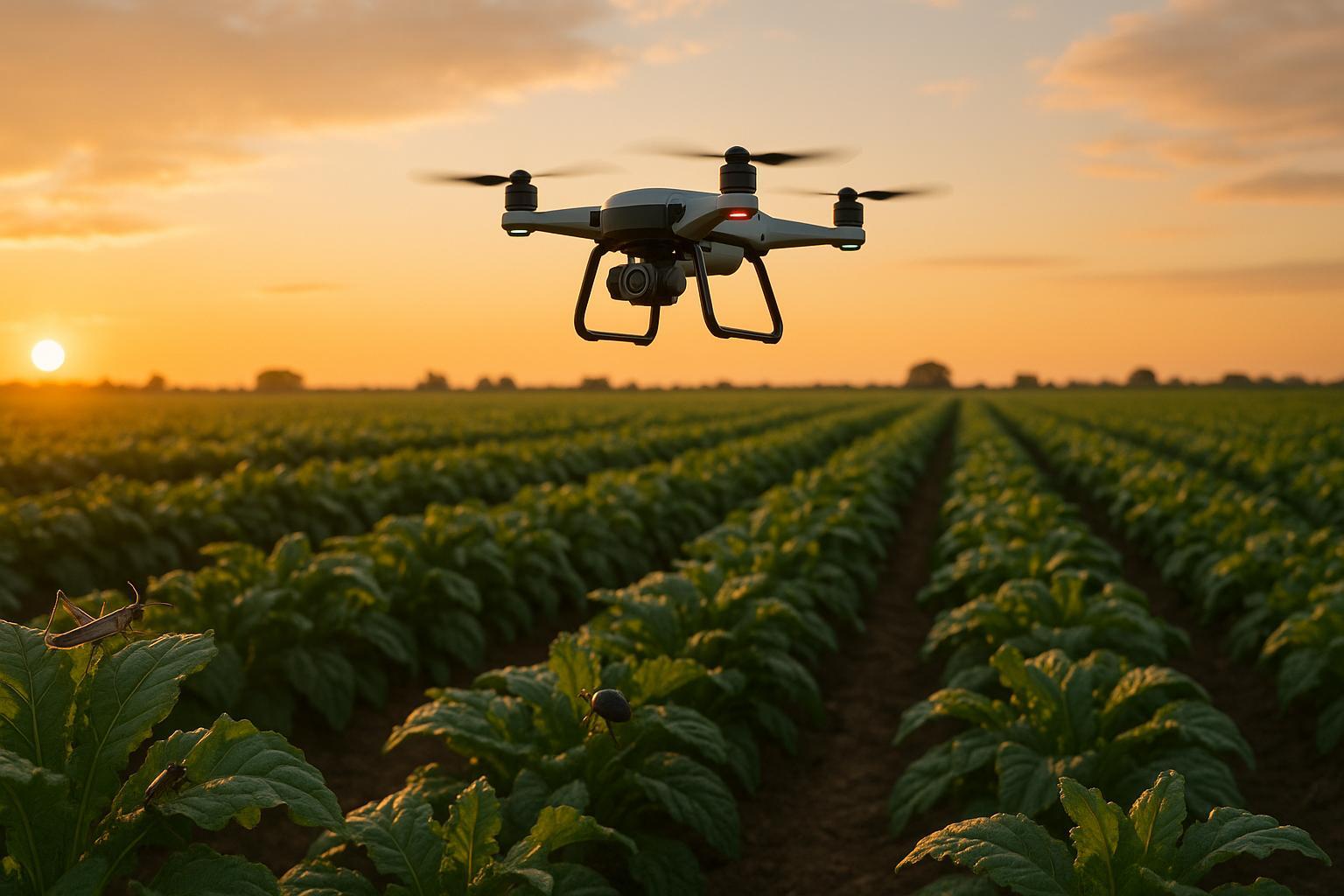
How AI Adjusts Pest Control in Real Time
Explore how AI revolutionizes pest control with real-time data for precise monitoring, efficient management, and reduced environmental impact.